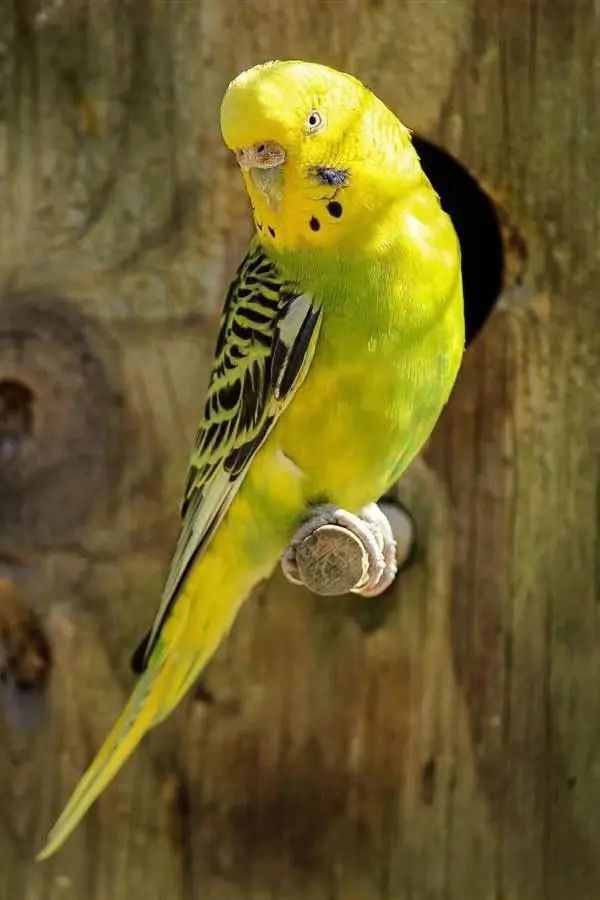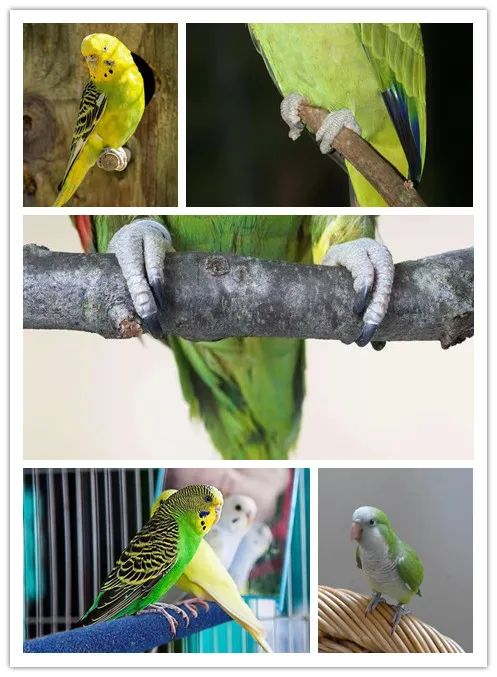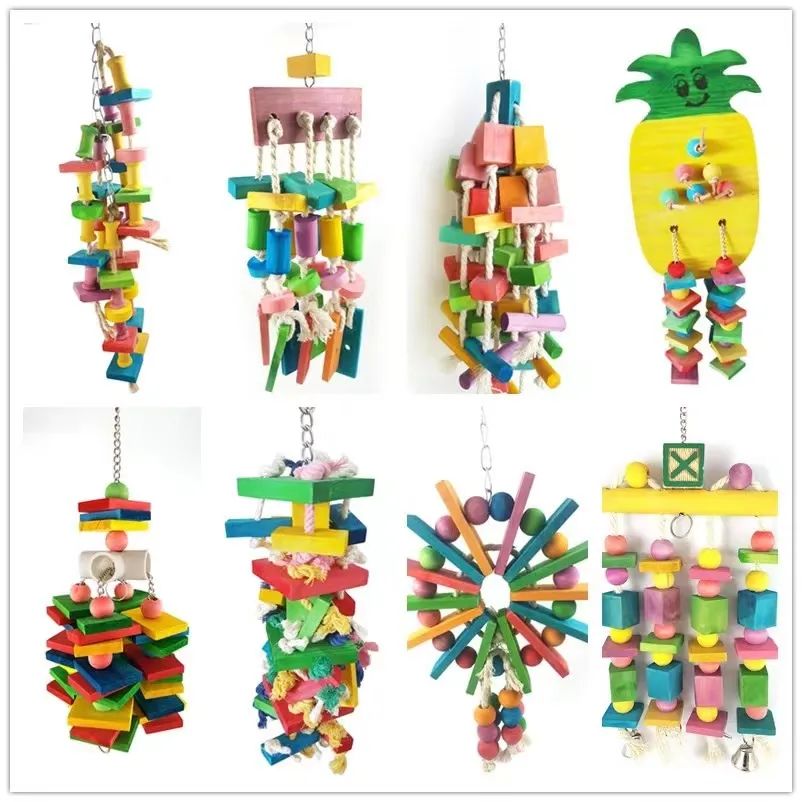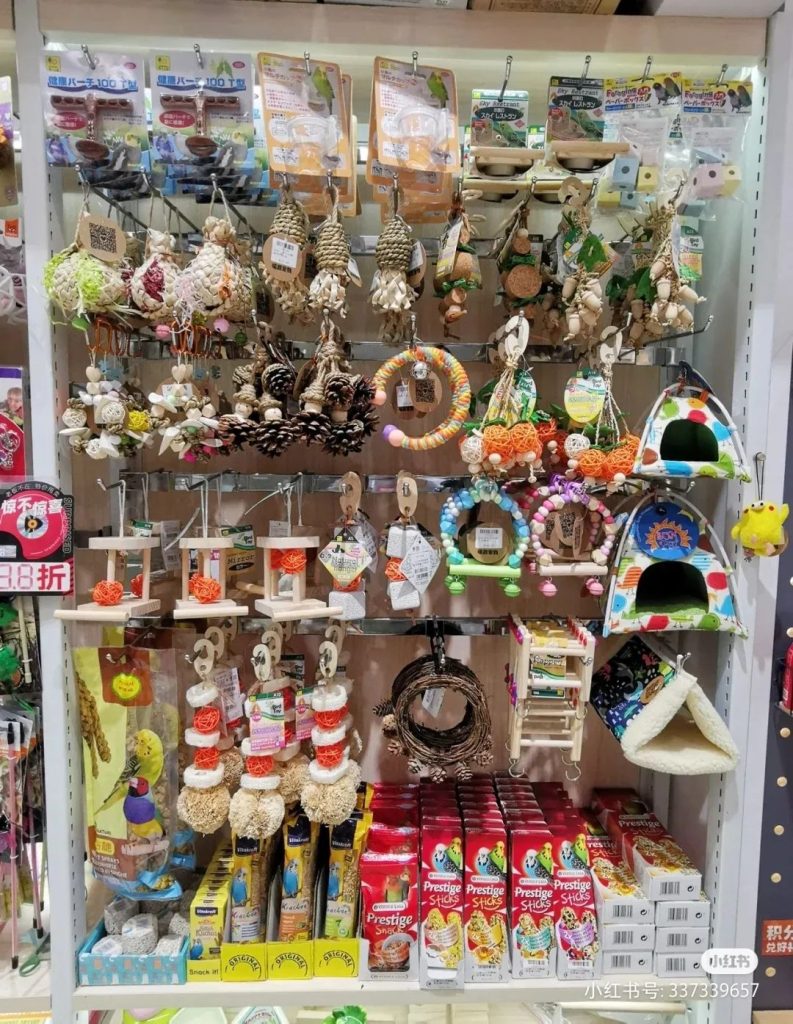The soul of parrot home decor – perches and toys.
When it comes to perches and toys for parrots, my sincere advice to you is to buy a variety of them, regularly switch them out, and minimize washing.
Human life is primarily two-dimensional, with three-dimensional elements as secondary.
Parrots’ lives, on the other hand, are primarily three-dimensional, with two-dimensional elements as secondary.

A day in the life of a pet parrot:
Eat – Play – Sleep – Eat – Play – Sleep… (inside the cage, on human bodies, anywhere in the house).
The configuration of perches and toys inside the cage is as important as the arrangement of walls and furniture in home decoration, and they serve multiple functions.
☆ Consider the bird’s height when placing perches.
☆ Use a variety of perches.
☆ Divide the vertical space of the cage into functional areas.
☆ Install additional perches in the available space to connect different areas.
☆ A typical cage requires at least three perches of different materials, thicknesses, and lengths.
☆ Place parrot toys next to the perches or in suitable blank areas to meet their basic home decoration needs.
A detailed discussion on perches:
- All products used for creating a parrot’s environment are collectively referred to as perches.
Categorized by material:
Sandblasted perches, cement perches, plastic perches, wooden perches, natural wood perches, mineral perches, cotton rope perches, etc.
Categorized by function:
Nail-trimming perches, swings, chewable perches, edible perches, heated perches, regular perches, climbing ladders/ropes, etc.
Material + function + cage space + bird species = the types and quantity of perches you choose to purchase (avoid purchasing overly smooth perches).
- Recommended perch length selection:
Choose short perches, choose short perches, choose short perches—important things are said three times.
As long as the diameter is appropriate, choose short perches (most parrots do not require perches longer than 30cm), as long perches serve no purpose or meaning (except for specially-shaped perches).
- Recommended perch thickness selection.

Bird feet can grip perches with a circumference ranging from 1/3 to 3/4 of the perch’s circumference, which is considered suitable.
For nail-trimming perches, the most appropriate diameter is around 1/2 to 2/3 of the perch’s circumference, allowing the bird to grip it comfortably.
- Basic principles of perch arrangement:
Use shorter perches in the upper-middle section and longer perches in the lower-middle section.
By following this principle, when a bird perches on the upper-level perch, its droppings won’t fall onto the lower-level perch.
Adhering to this principle allows most of the perches to remain clean without requiring frequent cleaning.
For specific details, you can visit a store and explore different cage setups to gain personal experience and understanding.
A detailed discussion on parrot toys:
If you give a toy to a child under the age of 3, are they more interested in assembling a toy or dismantling a toy?
The underlying logic of parrot toys is to provide something for parrots to destroy. A good toy for a parrot is one that can attract their attention and be easily destroyed by them.
- Why do parrots need toys?
Their strong curiosity, unique physiological characteristics (tool-like beaks and feet), lack of food scarcity pressure, high intelligence, and rich emotions all contribute to parrots having a strong demand for toys, second only to food.
- Evolutionary history of parrot toys:
Large red and green wooden blocks

Small blocks with diverse materials

Toys that are made of natural, loose, and chewable materials

Market trends and in-depth research on pet ownership preferences have led to the constant evolution of pet products.
- Types of Parrot Toys
They can be classified into the following categories:
- Hanging and chewing toys
- Grooming and stress relief toys
- Grasping and chewing toys
- Tabletop props
- Training and skill toys
- Puzzle and foraging toys
- Structural research toys
- Mirrors and reflective toys
- Tips for Choosing Parrot Toys
Toy Size:
Regardless of the size of the toy, whether it is as large as a table or as small as a finger, the main consideration is whether the parrot can easily destroy it by directly putting it into its mouth. If the toy is not easily destructible, it may not be suitable for the parrot.
Experimentation:
Discovering what your parrot likes is a matter of trial and error, rather than guessing.
- What if my parrot doesn’t like to play with toys?
In such cases, the first question to ask is, “Does your parrot spend most of its time freely roaming or perched on you?”
In most cases, the answer is yes.
Freely roaming parrots have the opportunity to explore everything in their environment, and you become their favorite toy. Why would they play with toys you buy for them?
Would you be interested in playing with fitness equipment in a neighborhood park while on vacation?
Another possibility is that the parrot is too timid, or the selection of toys is not appropriate.
- What if my parrot is afraid of toys?
Avoid forcefully placing the toy in the center of the cage and let it dangle.
The correct approach is gradual:
- Initially, leave the new toy near the parrot’s cage.
- After a couple of days, place it closer to the cage.
- Hang it outside the cage at a lower height.
- Take the parrot out of the cage and hang the toy in a lower corner while it is exploring.
- Once the parrot shows interest in chewing the toy, you can adjust its position.
- Will the novelty wear off?
Yes, but you don’t have to wait until a toy is completely destroyed before introducing a new one. You can rotate different toys to keep things fresh.
Parrots don’t differentiate between new and old toys. They simply need to know that there are always different things to explore.
- How should toys be placed?
Let your imagination run wild. Toys are not limited to being hung on a rope.
You can position them horizontally, vertically, diagonally, intertwine them, or modify them with props.
This way, both your pet and you will have fun. Don’t restrict yourself to just hanging toys in the cage.
- Do not wash the toys.
Toys do not need to be washed. If you are concerned about dust or bacteria, you can expose them to sunlight or use ultraviolet disinfection.
Avoid using water to wash them, even if they have bird droppings. Wait for them to dry and then remove or shake off any debris.
The most important reason not to wash toys with water is that if they are not completely dried, they can become a breeding ground for bacteria and mold, which poses a significant risk to the bird’s health.
If a toy becomes dirty or damaged, it is best to discard it and purchase a new one.
